1. Introduction
1.1 Background
Food, as an indispensable aspect of human survival, holds an important and unshakable position in the development of human civilization. In the Stone Age, humans began to study cooking tools, with the earliest kitchen utensils dating back 2.6 million years, primarily made of flaked stone tools. Subsequently, human civilization experienced agricultural and industrial revolutions, and kitchen utensils evolved from stone tools to today’s industrial products, made of various materials and capable of mass production. The history of kitchen utensils reflects not only technological progress but also changes in human lifestyles. Kitchen utensils are not only cooking tools but also cultural and historical witnesses. From a contemporary art perspective, the transition of kitchen utensils from handmade items to mass-produced industrial copies raises the question: Does this signify a gradual loss of artistic value? If these industrial products undergo an a creative revolution, what kinds of works will emerge? Within the context of an "industrial art revolution," how can we explore the possibility of transforming everyday kitchen tools into wearable items with functional, aesthetic, and environmental significance?
This study aims to examine the history of kitchen utensils and the modern trend of designing them as wearable items. By exploring the wearability of kitchen tools, the paper reveals the functional and innovative potential of this design approach. The paper will discuss the history of kitchen utensil development, wearable kitchen utensil design practices, aesthetic innovation, and environmental significance.
1.2 The development of kitchen utensils
The origin of kitchen utensils can be traced back to the Stone Age, approximately 2.6 million years ago, when humans used stone to create simple scrapers and hammers, primarily for hunting and basic food processing, such as cutting tough meat and bones. With the advent of the agrarian revolution, humans began to settle, domesticate large animals like cattle and horses, and rapidly advance agricultural techniques, which led farmers to seek tools capable of large-scale irrigation. This need spurred the demand for a material that was easily accessible, inexpensive, moldable, lightweight, and portable, with clay fulfilling these requirements. This led to the emergence of ceramic tools, which greatly facilitated food preparation and storage. As society entered the Bronze and Iron Ages, metal kitchenware was invented, such as copper and iron knives, axes, pots, and pans. The addition of metals made kitchen utensils stronger and more specialized, significantly improving the efficiency and effectiveness of food preparation.
During the Renaissance, the development of alchemy and chemistry provided the theoretical foundation for porcelain and glass manufacturing. Venetian artisans improved glass formulas and manufacturing techniques, producing high-quality, bubble-free glass, which advanced European glass technology. At the same time, due to increased trade between the East and West, porcelain was introduced to Europe through the Silk Road and maritime trade routes, prompting European countries to localize production and mimic techniques. With the development of art, trade, and culture, porcelain and glassware initially emerged. The introduction of these materials not only enhanced the functionality of kitchen utensils but also added aesthetic value.
As society and technology rapidly developed, the industrial revolution emerged, with machine production replacing manual labour, significantly increasing productivity. The rise of coal mining and organized factories led to the use of new materials like stainless steel and aluminium, allowing for mass replication, lighter, more durable, and easier-to-clean kitchen tools. Throughout the development of kitchen utensils, we observe that factors such as technological advancements, improvements in manufacturing processes, and material innovations are closely related to kitchenware innovations [1]. Simultaneously, over time, the personalization and artistry of kitchen utensils have gradually disappeared, evolving from functional tools to mass-produced, efficiency-driven items.
2. Literature review
Today, with the rapid development of society, people's aesthetic ability and consumption level have generally improved. When choosing kitchenware, people have transcended the simple functional needs and begun to seek the deeper value that kitchenware offers [2]. Kitchenware is an indispensable item in our daily life. However, with the continuous advancement of science and technology and the change of consumers' concepts, people's demands for kitchenware are also changing. To save costs, capitalists and people produce and use plastic kitchen products in large quantities for convenience. As a result, a large amount of kitchen utensils are wasted. The production of plastic kitchenware inevitably has an impact on the environment. On the one hand, the production of plastics requires a large amount of fossil energy and water resources, and at the same time generates a certain amount of pollutants such as waste gas, waste water and solid waste. On the other hand, plastic not only affects the environment, but also plastic residues have been found in the digestive systems of many aquatic species, including every kind of sea turtle and nearly half of seabirds and Marine mammals. If these wastes cannot be effectively recycled or their production reduced, they will cause continuous and serious pollution to the environment. Design can influence the environment and society. Designers have the obligation and responsibility to promote sustainable development, maximise the use of resources and extend the lifespan of products [3]. Therefore, the recycling and material selection of kitchenware are particularly important, which also reflects the environmental significance of designing wearable kitchenware.
The design significance is mainly reflected in three aspects. Firstly, the work opts for the use of sustainable materials - stainless steel, which is not only renewable and biodegradable but also recyclable, significantly reducing the environmental burden. In addition, stainless steel kitchenware belongs to medium and high-end products among kitchenware products, and has the advantages of being beautiful, durable and energy-saving [4]. Choosing high-quality and durable materials can extend the service life of products, reduce the use of disposable items and decrease the generation of waste. Secondly, the multi-functional design concept can reduce resource waste. By designing multi-functional kitchen utensils, we can achieve multiple uses with one item, reduce the purchase and manufacture of unnecessary tools, and cut down on resource consumption from the source. For instance, elaborately designed wearable tableware can be used during meals or worn as ornaments, thereby reducing the need for other decorative or functional items. Finally, the production method with a low carbon footprint is also an important manifestation of environmentally friendly design. Supporting local production and handicrafts can reduce carbon emissions from long-distance transportation. The adoption of energy-saving processes and technologies in the production process can significantly reduce energy consumption and pollution emissions. This not only conforms to the concept of environmental protection, but also promotes local economic development.
In terms of aesthetic value, unique design is crucial. The core of aesthetic principles and design methods lies in the combination of function and form [5]. Through innovative shape design, kitchen utensils can transform into fashionable, beautiful wearable items that are both functional and decorative. For example, a fork and spoon designed as jewellery can be used on the dining table as utensils and worn as fashionable accessories, enhancing personal style and individuality. The combination of functionality and aesthetics is another important aesthetic value in wearable kitchen utensil design. By focusing on comfort and ergonomic design, these utensils can be both visually appealing and practical without hindering everyday activities. This practical aesthetics enhances the user experience, bringing both visual and tactile pleasure to the wearer. In summary, designing kitchen utensils as wearable items not only demonstrates exceptional environmental performance through sustainable materials, multifunctional design, and low-carbon production but also provides rich aesthetic value through unique designs, functional and aesthetic integration, as well as cultural and emotional connections. This design concept not only meets modern consumers' dual demands for eco-friendliness and aesthetics but also pushes society toward a greener, more environmentally friendly, and beautiful future. Through continuous innovation and improvement, wearable kitchen tools are likely to play an important role in future design, becoming a model for integrating environmental and aesthetic values.
3. Methodology
Wear-ability Design and Practical Research
As human civilization progresses, kitchen utensils have evolved from products merely meeting human survival needs to items reflecting humanized demands, presenting a new angle in kitchen utensil design thinking [6]. From a contemporary art perspective, the transition of kitchen utensils from handmade items to mass-produced industrial copies seems to suggest a gradual loss of artistic value. In this context, my design aims to explore the possibility of transforming kitchen utensils into wearable items, using this as an entry point to explore how industrial products can be reinvented in the context of contemporary industrial society. Transforming kitchen utensils into wearable items can imbue everyday objects with new cultural and artistic significance, representing an innovative cross-disciplinary design attempt. It encourages people to re-examine common items in daily life, offering them new values and meanings.
At the initial stage of this project, I selected common kitchen utensils and applied a representational object approach to redesign them while retaining their original form characteristics. This inspiration comes from contemporary artist Marcel Duchamp's concept of "ready-made art." Before World War I, Duchamp began experimenting with presenting objects as art. He chose mass-produced, commercial, usually functional items, designated them as works of art, and gave them titles. He called these items "readymades," which subverted the centuries-old notion of the artist as a skilled creator of handmade products. When Duchamp’s most famous work, Fountain, was exhibited in 1917, the boundary between mass-produced industrial objects and works of art became blurred. This novel approach not only challenged the nature of art and its recognition in contemporary society but also gave ordinary objects a new artistic identity. Thus, these formerly mundane items were transformed into “non-art art,” showcasing the close connection and infinite possibilities between art and life [7]. Since then, the boundary between mass-produced industrial objects and works of art has remained unclear. Duchamp's artistic ideas directly influenced the next phase of my project. After combining and reorganizing different objects, I selected several combinations of objects as the main visual forms for the “process images” of my work. When people think of forks, spoons, whisks, straws, and funnels, their first thought is "These are tools for eating and cooking." Therefore, while retaining the original features of these objects, I broke their structures by stretching or twisting certain parts to make them wearable and create new visual forms.
After a series of studies, I ultimately selected a few key visual forms for further development. The first design involved stretching and twisting the middle part of a fork to form a circular shape, turning it into a brooch’s backing pin that could also be worn as a necklace (Figure 1). The second design involved inverting a strainer to form a back pin clasp (Figures 2 and 3). The third design involved knotting one end of a straw and sharpening the other end into a needle-like shape, combining two straws to create a wearable object (Figures 4 and 5). The fourth design involved merging the handles of a whisk and a strainer, cutting one of the whisk’s metal wires to form the needle for a brooch, resulting in a stable triangular structure (Figure 6). Research into the wearability of kitchen utensils involves innovations in kitchen utensil design and function. This study highlights breakthroughs and applications in modern design concepts. Through the aforementioned design practice research, it has been demonstrated that ordinary objects, through the artist's selection and redefinition, can become works of artistic value. This concept is fully reflected in the wearable design of kitchen utensils. By transforming common kitchen tools into exquisite jewellery, not only are the traditional boundaries of art broken, but people are also prompted to reassess the value and significance of everyday objects. In conclusion, the wearable design of kitchen utensils not only enriches the creative sources for jewellery design but also emphasizes breakthroughs and applications in modern design concepts, injecting new vitality and depth into contemporary design. Future research could explore the unique values of kitchen utensils in different cultural contexts and how innovative designs can integrate them into modern life.
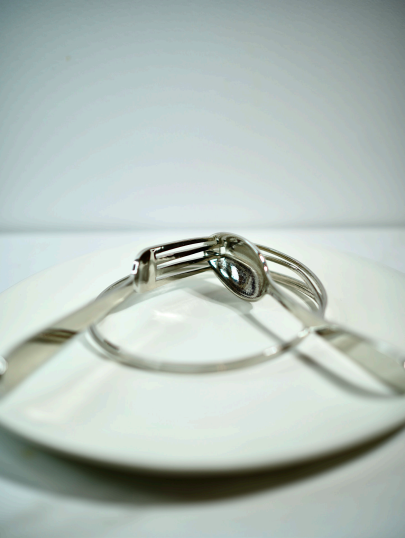
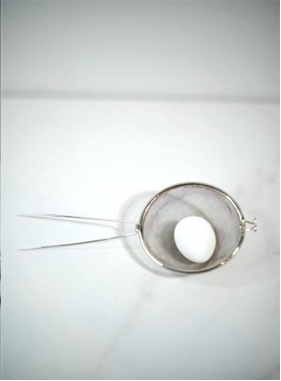
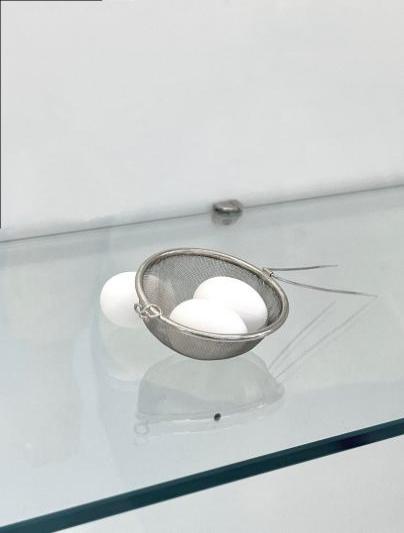
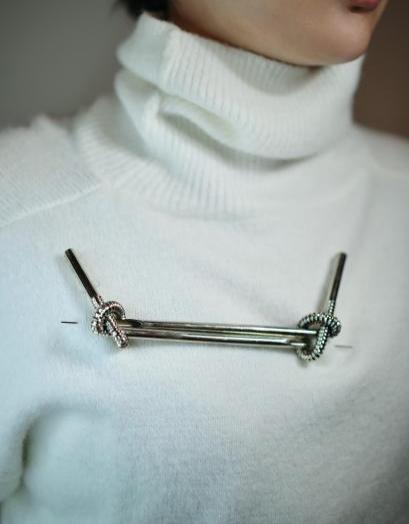
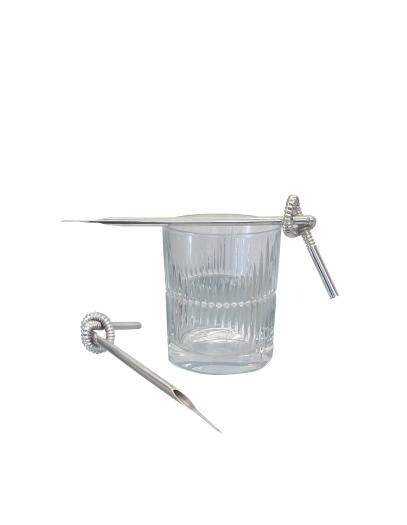
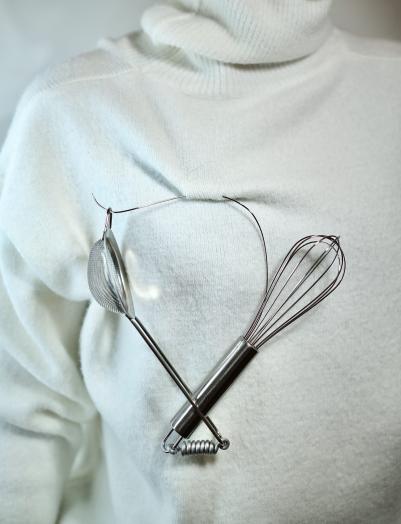
4. Results
Experimental Design and Data Analysis
To investigate public attitudes towards wearable kitchen utensils, I conducted a survey with different age groups using data analysis and control variables. I initially set different test group numbers for age groups, dividing them into five experimental control groups: 18-25 years, 26-35 years, 36-45 years, 46 years, and over. Each group consisted of 25 participants. Considering varying cooking frequencies among different age groups, the questionnaire also included a control group for cooking frequency, divided into categories such as almost daily, weekly, occasionally, and rarely. The survey also gathered data on whether participants had heard of the concept of wearable kitchen utensils and their level of interest (Figures 7 and 8). This data helps understand the popularity of the concept and how many people are familiar with it.
After gathering basic data, I performed cross-analysis on three sets of data. The first set examined the relationship between age and cooking frequency. By cross-analyzing age and cooking frequency, we can observe differences in cooking habits among various age groups. This step helps reveal how age relates to cooking habits, such as whether there are significant differences in cooking frequency across different age groups. The data showed that cooking frequency increases with age, meaning older people are more familiar with kitchen tools. The second set analyzed the relationship between cooking frequency and acceptance of wearable kitchen utensils. The data revealed a positive correlation between cooking frequency and acceptance of wearable kitchen tools, suggesting that the more familiar a person is with traditional kitchen tools, the more likely they are to accept wearable kitchen utensils. The third set examined the relationship between age and the level of acceptance of wearable kitchen utensils. Cross-analysis showed that there was little difference in acceptance between those aged below 36 years and those above 36, with acceptance rates of 42.53% and 41.38%, respectively (Figure 9). This suggests that age does not significantly impact the acceptance of wearable kitchen utensils.
I also analyzed specific kitchen utensils' potential for wearability within the survey (Figure 11). The questionnaire asked participants to vote for kitchen utensils they thought could be made wearable. The most popular items were the whisk, fork, spoon, and straw, in that order. This indicates that these kitchen utensils are more likely to be transformed into wearable items. Through these detailed steps, the observers were able to gain a comprehensive understanding of the survey data and extract valuable information to support future designs and promotions. The data also reflects a positive public attitude toward wearable kitchen utensils, suggesting that wearable kitchen tools have significant market and commercial potential (Figure 10,11).
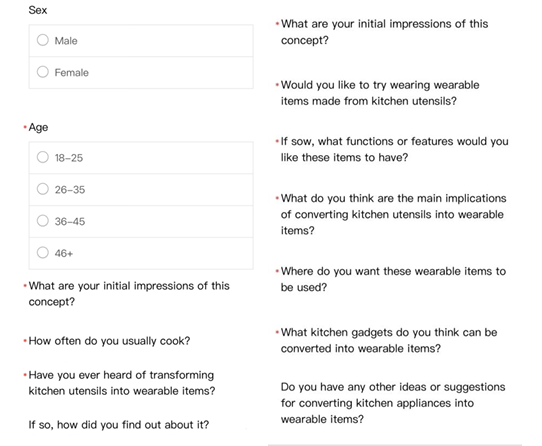

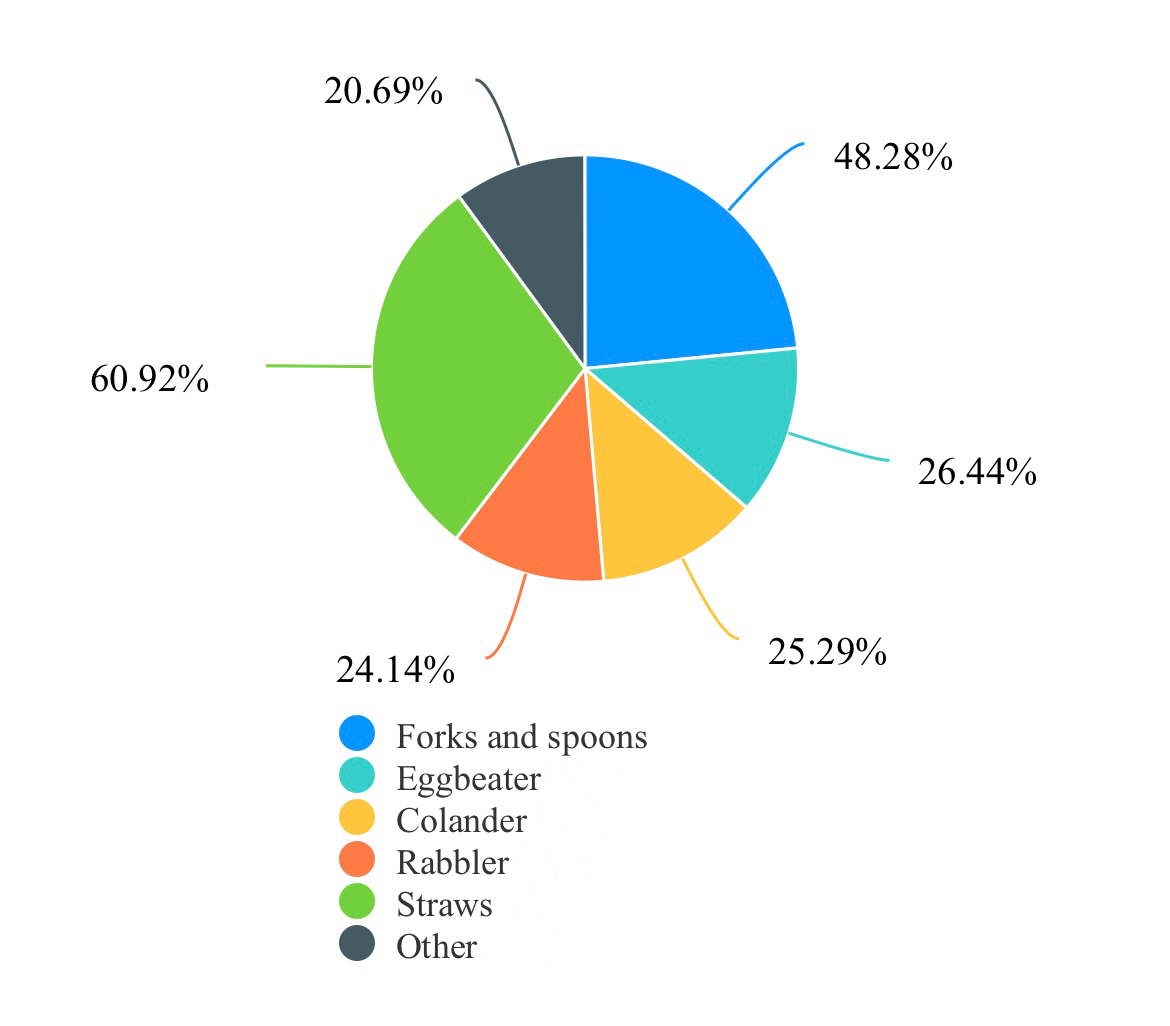
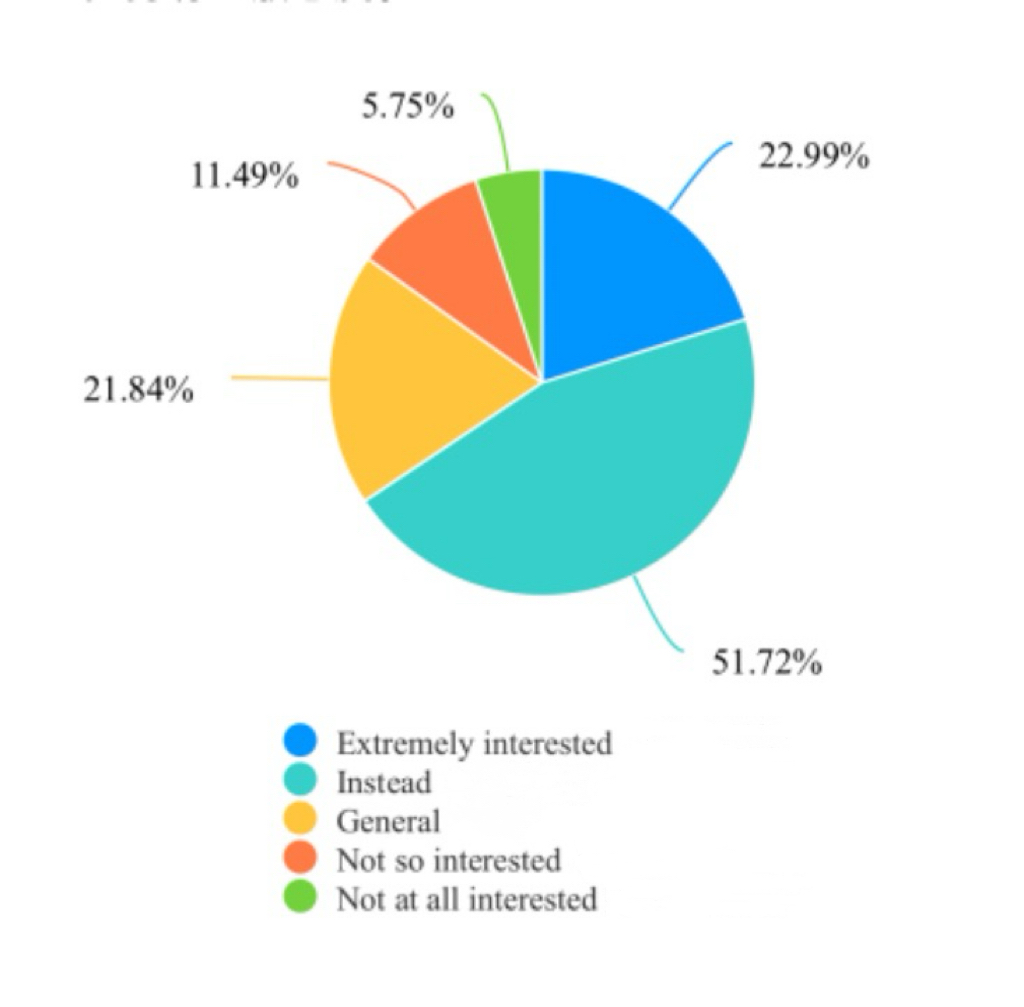
5. Discussion
As the boundaries between function, fashion, and personal expression continue to blur, the idea of wearable kitchen utensils offers a fresh perspective on how everyday objects can be reimagined. In contemporary life, consumers are no longer satisfied with purely functional products; they increasingly look for designs that are practical yet reflect personal taste, cultural values, and lifestyle preferences. Traditionally seen as tools for cooking and eating, kitchen utensils now present a new opportunity to become part of the body through wearable design, reshaping their role in daily routines.
This approach not only reinvents the object’s use but also introduces new aesthetic and emotional dimensions. In social settings, for instance, a spoon transformed into a brooch or a fork reworked into a necklace becomes a conversation piece—an intersection of identity, creativity, and utility. When paired with clothing or accessories, these redesigned utensils can convey individuality and even act as subtle commentaries on consumption, material culture, and sustainability. From a design standpoint, the challenge lies in maintaining the balance between usability and aesthetic appeal. The object must retain enough of its original form to be recognizable, while undergoing thoughtful transformation to serve a new function and evoke visual interest. Materials play a critical role in this process. Stainless steel, for example, offers durability, elegance, and recyclability, making it ideal for pieces that aim to last longer and reduce waste.
In addition, wearable kitchen utensils align with growing awareness of environmental responsibility. In contrast to mass-produced plastic items, which are often discarded quickly, these pieces encourage reuse, longevity, and emotional attachment. Their dual purpose—as tools and as adornment—means fewer objects are needed overall, aligning with principles of minimalism and sustainable living.
Looking ahead, there is also potential to integrate new technologies into wearable utensil design. As smart materials and miniaturized electronics advance, one can imagine accessories that respond to temperature, monitor movement, or interact with other devices. While still largely conceptual, these ideas signal the possibility of merging traditional craftsmanship with innovation to meet the evolving needs of modern users.
In essence, wearable kitchen utensils challenge conventional definitions of both fashion and function. They offer a space where creativity, utility, and sustainability meet—where a spoon is no longer just a spoon, but also a symbol of design’s capacity to transform the ordinary into the extraordinary. As such, they not only enrich the practice of design but also inspire a more reflective and personalized engagement with everyday objects.
6. Conclusion and recommendations
Kitchen utensils are not only practical tools in daily life but also reflect culture, identity, and social values. From early stone implements to modern smart kitchen devices, their development records the advancement of human civilization and the evolution of lifestyles. By studying the cultural significance of kitchen utensils, we can gain a deeper understanding of human history and society while learning to appreciate and reimagine the value of these everyday objects.
Wearable design for kitchen utensils opens new pathways in contemporary jewelry design and offers innovative modes of interaction between users and products. In this context, wear-ability enhances product-user relationships by creating engagement, emotional resonance, and functional appeal. Such interactive qualities can increase user interest and stimulate both usage and purchase intent [8]. From an environmental, functional, and aesthetic perspective, wearable kitchen utensils bring renewed vitality and substance to modern design thinking.
This study presents four main findings and conclusions: First, transformative potential. Through creative re-design, ordinary kitchen utensils such as forks, spoons, and straws can be transformed into fashionable, functional wearable items. This not only expands the objects’ practical utility but also enhances their aesthetic value. Second, environmental significance. The use of biodegradable and recyclable materials in wearable kitchenware helps reduce environmental impact. Multifunctional designs and durable materials contribute to lower resource consumption and a reduced carbon footprint. Third, aesthetic value. The application of innovative shapes and distinctive designs makes these utensils not only functional but also visually compelling, allowing users to express individuality through everyday items. Fourth, market potential and existing challenges. Although consumer interest in wearable kitchen tools is growing, challenges remain in terms of production techniques, design complexity, and market positioning. Continued progress in technology, cross-disciplinary design approaches, and exploration of diverse application contexts will be key to the successful development of this emerging niche. The broader value of this research lies in offering a fresh perspective for design practice. It encourages designers to look beyond traditional categories and to draw inspiration from overlooked, utilitarian objects. Particularly in the context of kitchenware, designers can emphasize sustainable materials, reusability, and aesthetic appeal to create objects that are both meaningful and multifunctional.
Future research could further investigate the wearability of other everyday objects, especially through the application of advanced materials and smart technologies. Additionally, deeper analysis of consumer preferences across various design styles and functional combinations will provide more targeted insights for product development. This study reveals the vast creative potential of wearable design grounded in ordinary tools. By reimagining kitchen utensils as wearable art, designers can redefine the boundaries of function, fashion, and sustainability—paving the way for more thoughtful, expressive, and responsible design in the years to come.
References
[1]. Hao, Z. (2014). Research on future kitchen appliance design in China based on matter science. Hebei University of Technology for The Master Degree of Artistic Design.
[2]. Sun, H. & Wang, C. (2024). Product reliability report. Explore the innovation of kitchenware product design based on emotion. Beijing, CY: China Quality News Agency.
[3]. Li, M. (2024). Green Packaging: Research on Industrial Design Innovation Strategies Driven by Sustainable Design. Beijing, CY: China Export Packaging Research Institute.
[4]. Bao, S. (2012). China metallurgical news: Market status and development trend of stainless steel kitchenware in China. Beijing, CY: China Metallurgical News.
[5]. Lin, W. (2024). Tian Gong: The cultural value of traditional decorative art design aesthetics. Shanxi: Shanxi Science and Technology Press Publishing Media Group Limited Liability Company.
[6]. Chen, H. (2018). Master's thesis of Soochow University: Research on Home Kitchen Appliance Design from the Perspective of Universal Design. Soochow: Soochow University Press.
[7]. Li, X. (2024). Master's thesis of Changchun Normal University: A Study of the Representation of Ready-Made Products in Western Contemporary Installation Art. Changchun: Changchun Normal University Press.
[8]. Liang, X., & Zhang, A. (2018). West leather: Kitchen appliance design trends under the influence of modern lifestyle. Sichuan: Sichuan West Leather Magazine.
Cite this article
Qie,J. (2025). Innovative Practical Research on the Wearability of Kitchen Utensils. Lecture Notes in Education Psychology and Public Media,104,16-24.
Data availability
The datasets used and/or analyzed during the current study will be available from the authors upon reasonable request.
Disclaimer/Publisher's Note
The statements, opinions and data contained in all publications are solely those of the individual author(s) and contributor(s) and not of EWA Publishing and/or the editor(s). EWA Publishing and/or the editor(s) disclaim responsibility for any injury to people or property resulting from any ideas, methods, instructions or products referred to in the content.
About volume
Volume title: Proceeding of ICGPSH 2025 Symposium: Exploring Spelling Evolution and Educational Approaches to Dyslexia
© 2024 by the author(s). Licensee EWA Publishing, Oxford, UK. This article is an open access article distributed under the terms and
conditions of the Creative Commons Attribution (CC BY) license. Authors who
publish this series agree to the following terms:
1. Authors retain copyright and grant the series right of first publication with the work simultaneously licensed under a Creative Commons
Attribution License that allows others to share the work with an acknowledgment of the work's authorship and initial publication in this
series.
2. Authors are able to enter into separate, additional contractual arrangements for the non-exclusive distribution of the series's published
version of the work (e.g., post it to an institutional repository or publish it in a book), with an acknowledgment of its initial
publication in this series.
3. Authors are permitted and encouraged to post their work online (e.g., in institutional repositories or on their website) prior to and
during the submission process, as it can lead to productive exchanges, as well as earlier and greater citation of published work (See
Open access policy for details).
References
[1]. Hao, Z. (2014). Research on future kitchen appliance design in China based on matter science. Hebei University of Technology for The Master Degree of Artistic Design.
[2]. Sun, H. & Wang, C. (2024). Product reliability report. Explore the innovation of kitchenware product design based on emotion. Beijing, CY: China Quality News Agency.
[3]. Li, M. (2024). Green Packaging: Research on Industrial Design Innovation Strategies Driven by Sustainable Design. Beijing, CY: China Export Packaging Research Institute.
[4]. Bao, S. (2012). China metallurgical news: Market status and development trend of stainless steel kitchenware in China. Beijing, CY: China Metallurgical News.
[5]. Lin, W. (2024). Tian Gong: The cultural value of traditional decorative art design aesthetics. Shanxi: Shanxi Science and Technology Press Publishing Media Group Limited Liability Company.
[6]. Chen, H. (2018). Master's thesis of Soochow University: Research on Home Kitchen Appliance Design from the Perspective of Universal Design. Soochow: Soochow University Press.
[7]. Li, X. (2024). Master's thesis of Changchun Normal University: A Study of the Representation of Ready-Made Products in Western Contemporary Installation Art. Changchun: Changchun Normal University Press.
[8]. Liang, X., & Zhang, A. (2018). West leather: Kitchen appliance design trends under the influence of modern lifestyle. Sichuan: Sichuan West Leather Magazine.









